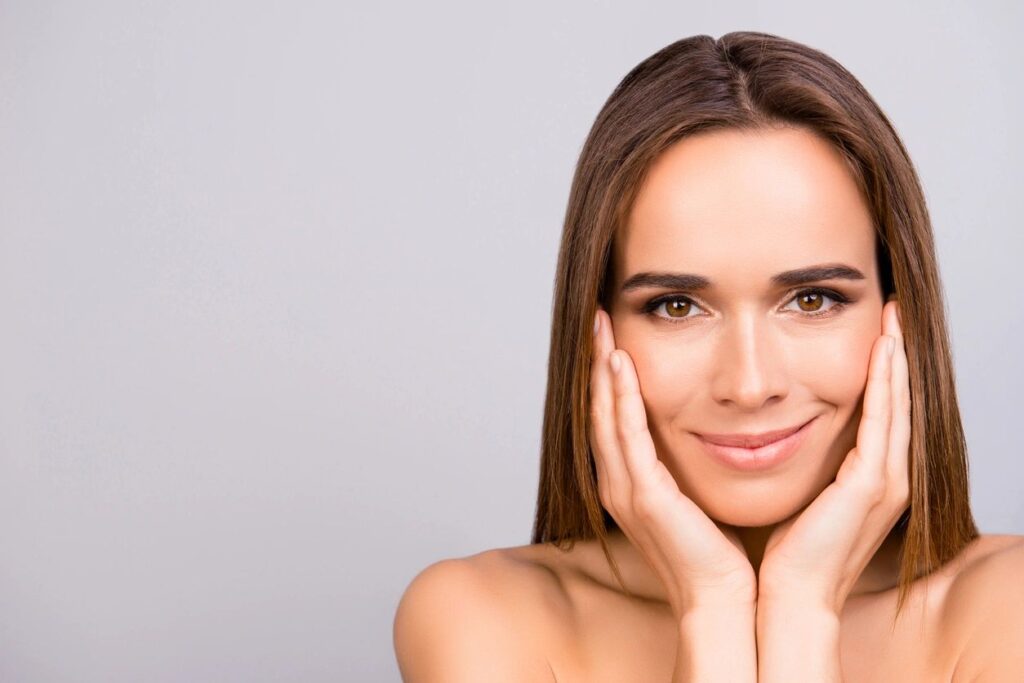While dermaplaning may look intimidating, it is generally considered a safe procedure if performed correctly by a trained professional. It does not require any anesthesia, and most people feel little to no pain during treatment.
Remember that after your dermaplaning session, it’s important to use a gentle cleanser and apply sunscreen (which you should already be doing anyway). You will also want to hydrate your skin with a nourishing moisturizer with barrier-protecting ingredients like hyaluronic acid.
It’s Safe
Dermaplaning is a safe treatment that’s suitable for all skin types. A surgical blade removes fine facial hair (vellus hair or peach fuzz) that could trap dirt and oil in the pores, dulling the skin. The soft hairs do not grow back thicker or darker and are only removed during a dermaplaning appointment. This technique can help minimize the appearance of fine lines and wrinkles, hyperpigmentation, and acne scars. It also helps makeup appear more even and smoother on the skin, making it easier to apply.
However, avoid this procedure if you are sensitive to the blade or have a condition like rosacea or severe acne. Additionally, if you have cold sores, a dermaplaning session can cause them to reactivate. Also, diagnosing areas of the face with breakouts or irritation is not recommended because it can exacerbate and worsen the issues. You should always consult a dermatologist before getting this treatment done.
Selecting a reputable dermaplaning near me ensures a safe and effective skincare experience. To achieve the best results and preserve the health of your skin, reputable providers use high-quality tools, employ practitioners with expertise, and maintain strict hygiene standards. These measures provide convenience and peace of mind.
It’s Effective
When performed properly by a professional, dermaplaning is completely painless. Unlike shaving your legs or armpits, the blade is slid across the skin using small, circular motions. Dermaplaning is also effective for reducing the appearance of wrinkles, says Sadick, as the scraping creates “subclinical wounds,” which prompt your body to regulate growth factors and stimulate collagen production. Plus, it helps eliminate blackheads and comedones by removing excess oil and dirt from the top layer of your skin. Just be careful not to overdo it because this treatment could exacerbate your symptoms if you have sensitive or irritated skin—like eczema, rosacea, or inflamed acne. Plus, you should avoid dermaplaning over a pimple or other blemish because it can nick or scratch the delicate skin underneath. That’s why it’s best to leave dermaplaning to the pros.
It’s Affordable
Dermaplaning can be expensive. But if you’re willing to make it an ongoing treatment, it could be worth it. Especially since it’s a way to skip one step in your makeup routine and get that “glowy, fresh face” we all want.
The results are instant, though they take a few days to kick in fully. It’s also important to be consistent with your treatment schedule (every three weeks) and use good sunscreen afterward.
Although it may sound scary to have a blade scrape your face, you don’t feel much of anything. And if you’re nervous, the dermatologist or esthetician can apply a numbing cream before beginning. Plus, the blade is so small that it’s not as painful as shaving any other body part. (Well, except maybe getting a bikini wax.) The only real pain is that you’ll want to keep touching your baby-soft skin.
It’s Timeless
Dermaplaning is a great option for those who want to boost their makeup application and highlight results without the time-consuming and messy process of using a chemical peel. It also helps absorb your favorite skin-care products, like vitamin C serums and hyaluronic acid, ensuring they reach all epidermis layers. The peach fuzz removed during a dermaplaning treatment will not grow back thicker or darker, so don’t worry about regaining your insecurities. The fine vellus hairs are replaced with newer, fresher, healthier cells. Although the results of dermaplaning are noticeable quickly, they will only last for as long as your natural cellular turnover cycle (typically 28 to 40 days). Consistent treatments and good skin care habits will help maintain the best and longest-lasting results. You should always follow up with a hydrating moisturizer and a broad-spectrum sunscreen to protect your skin.

